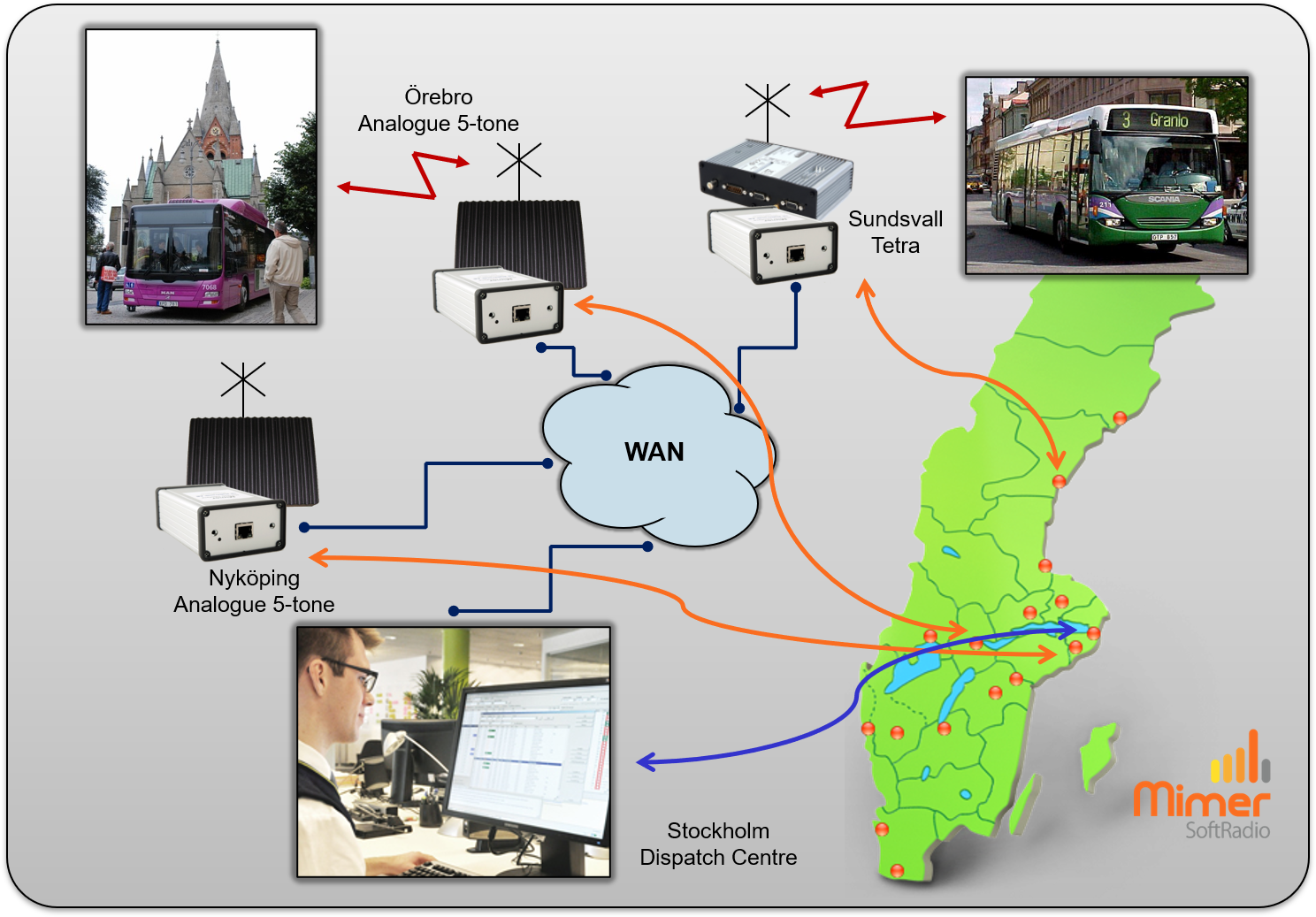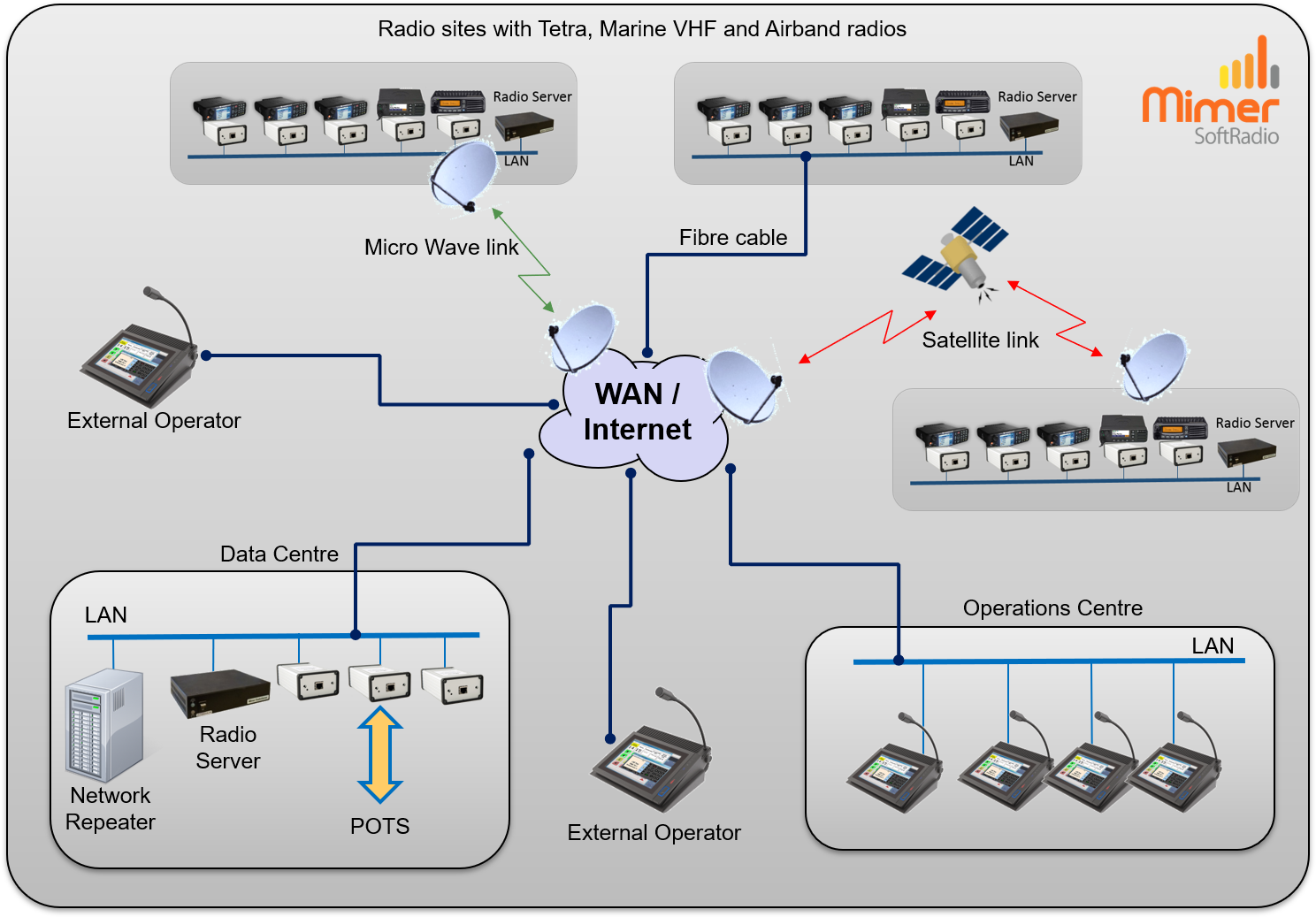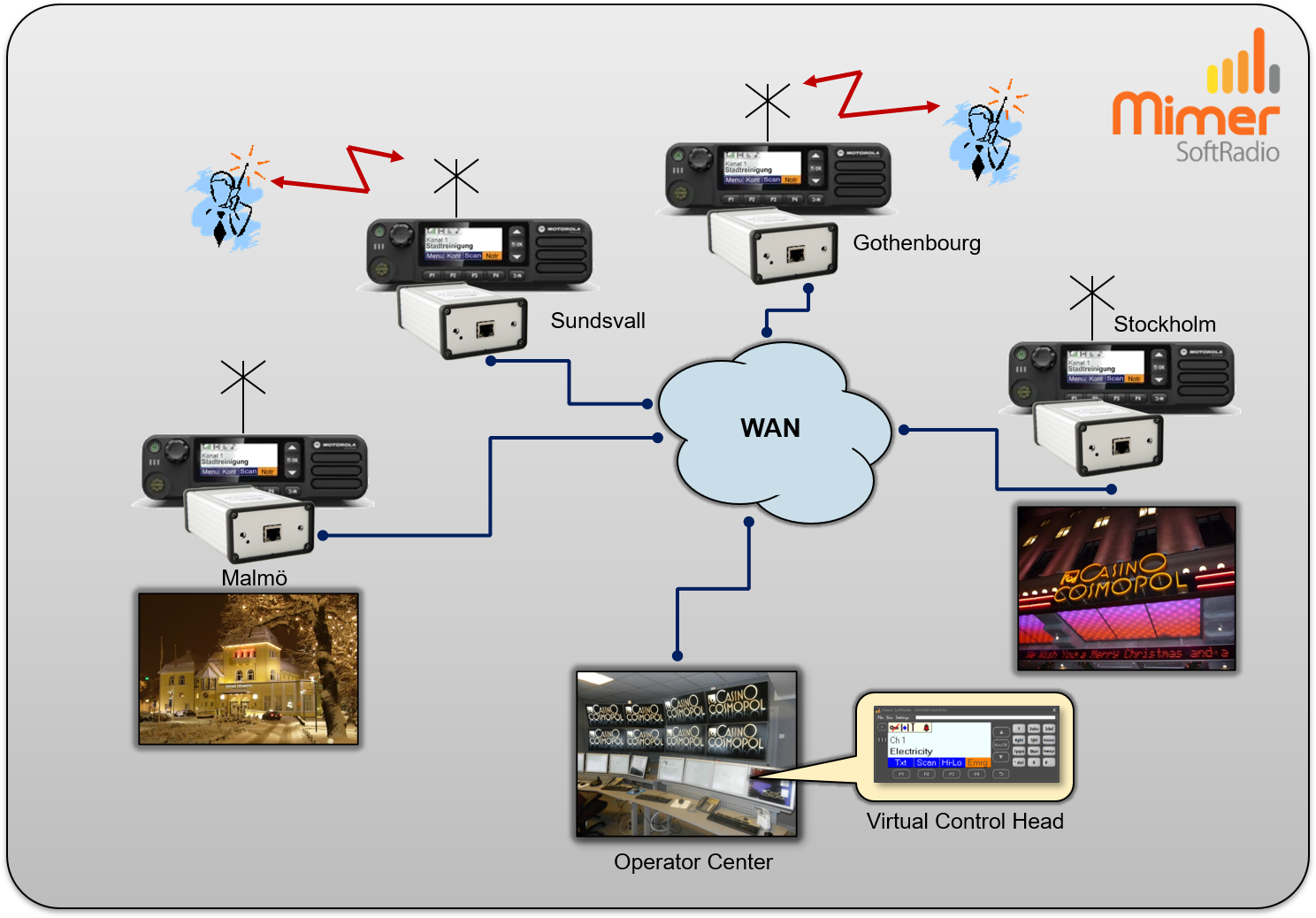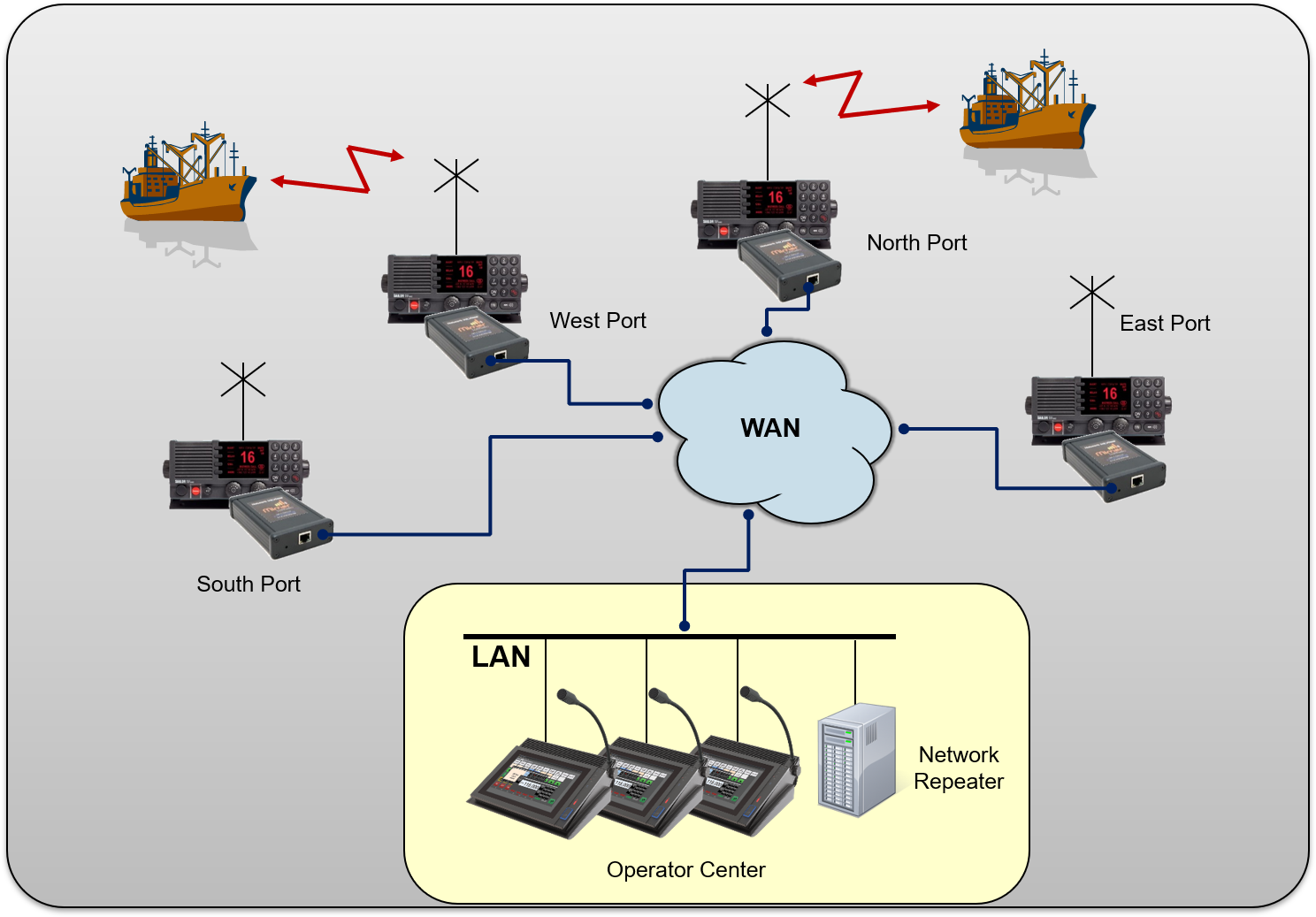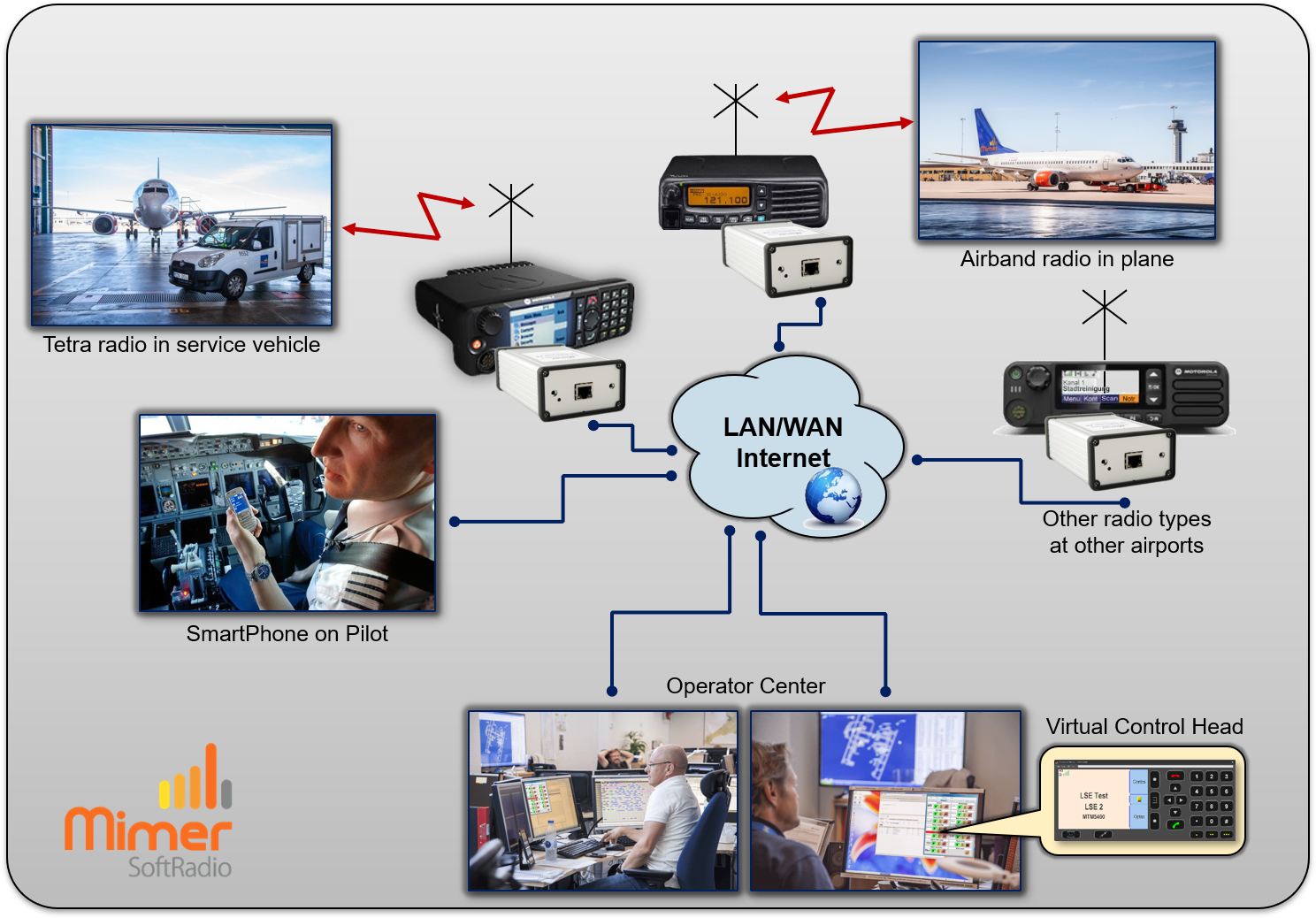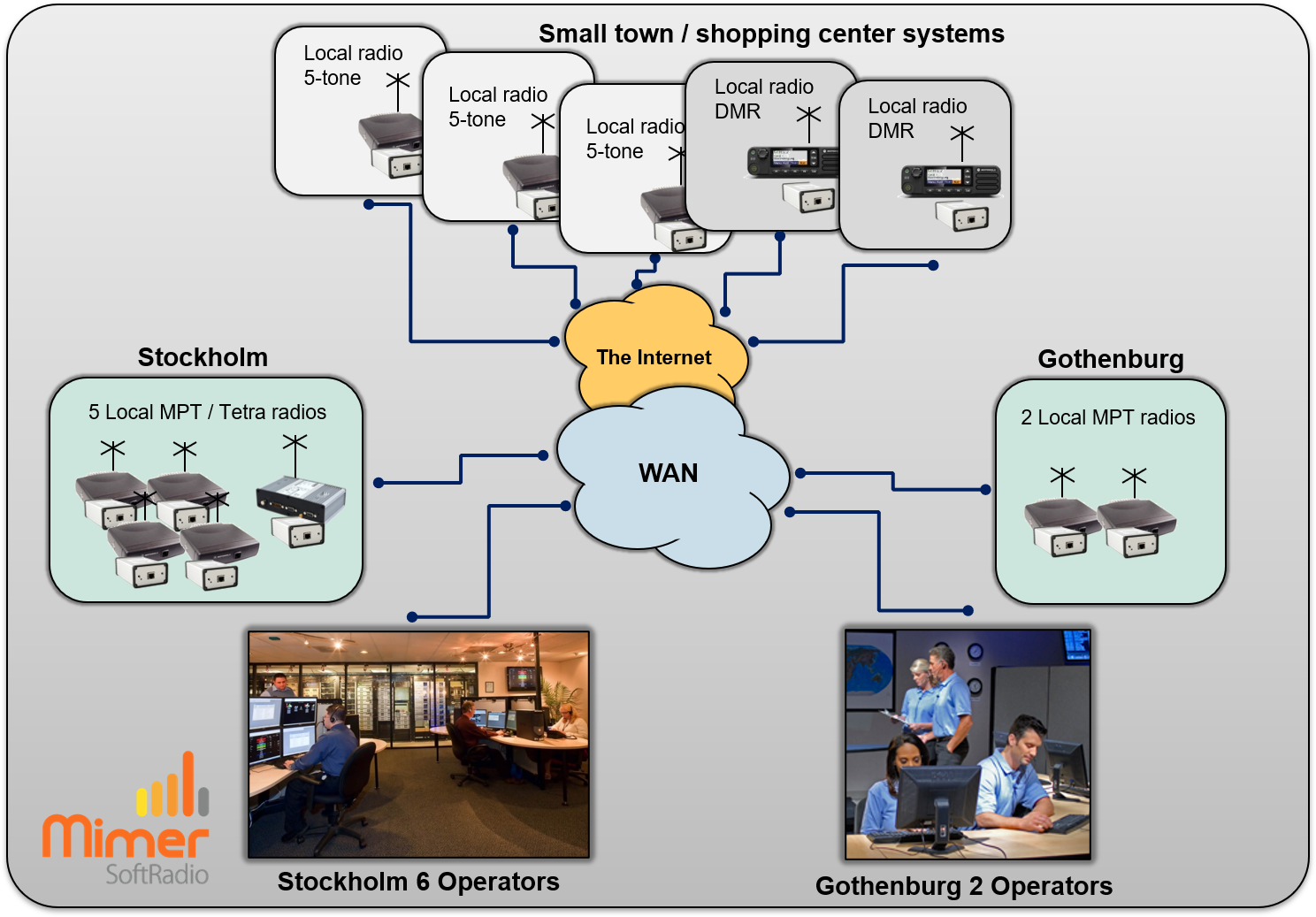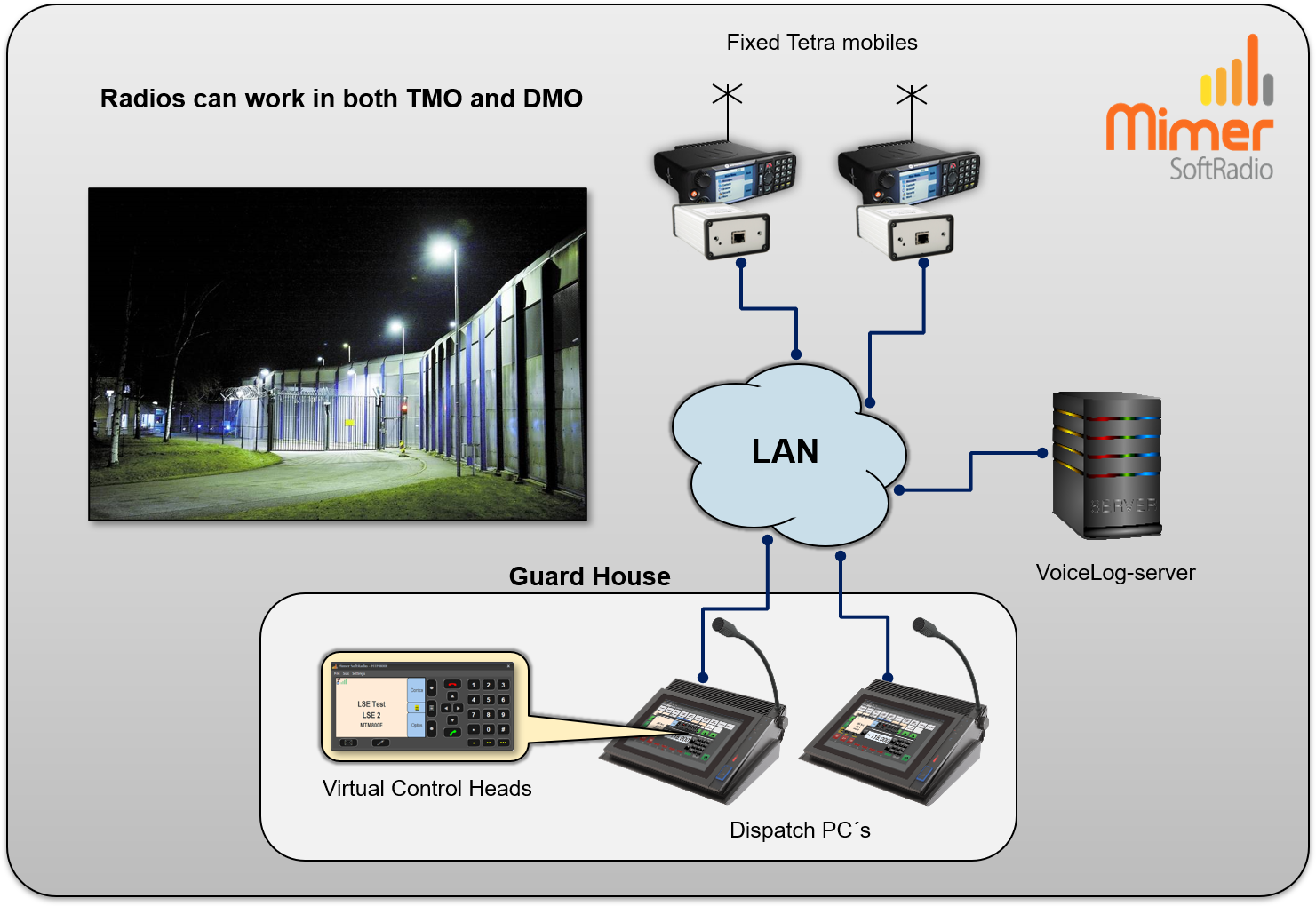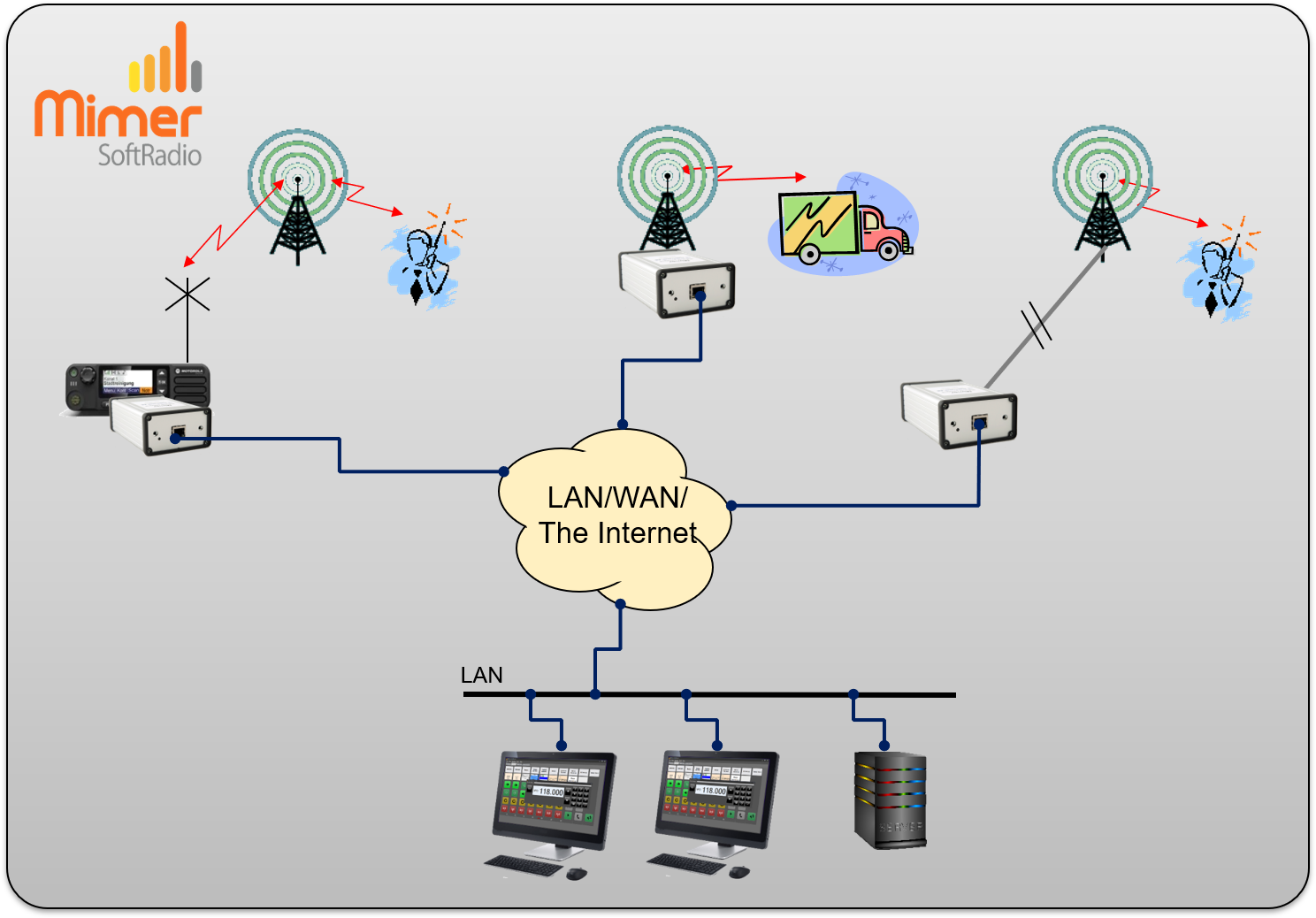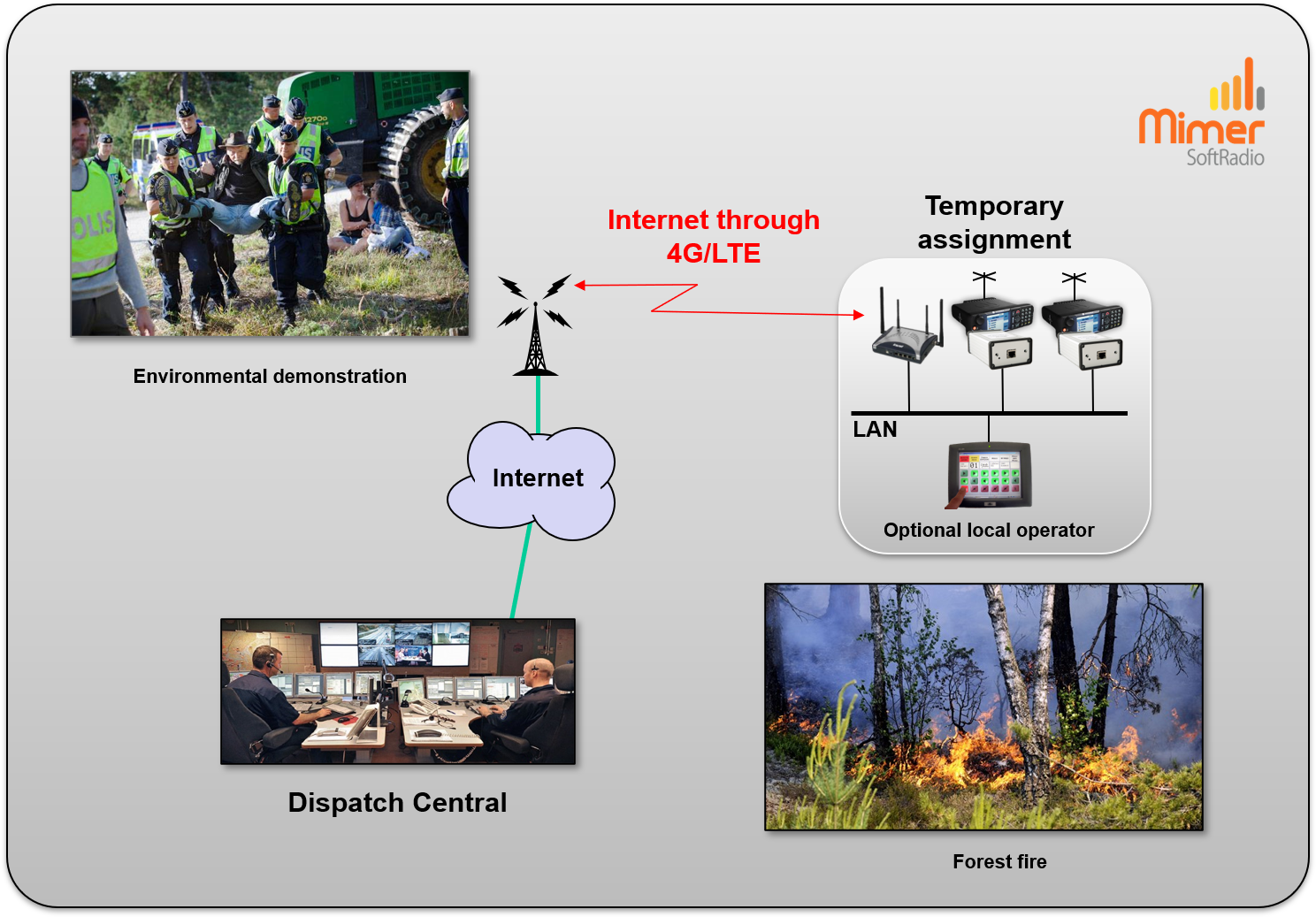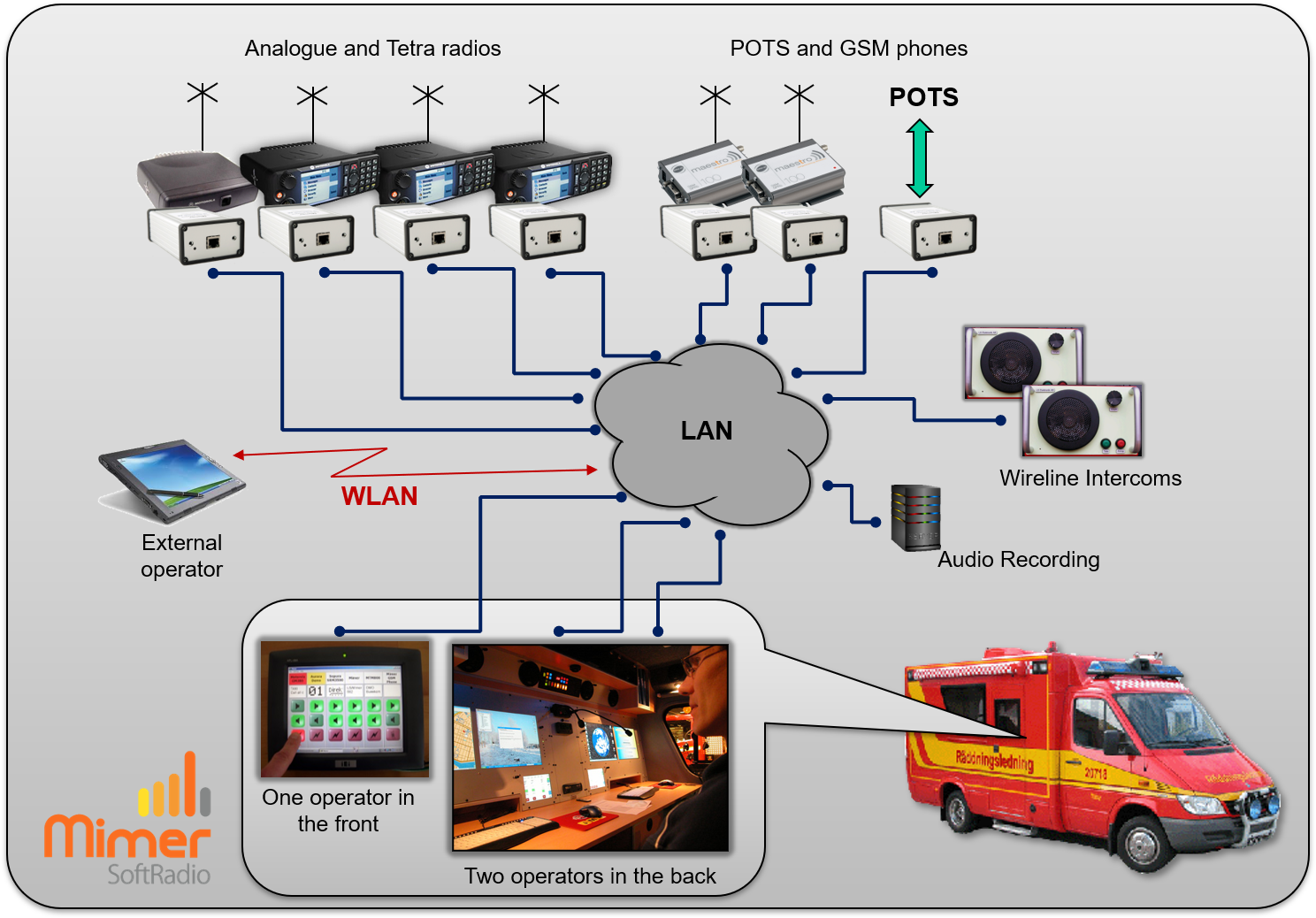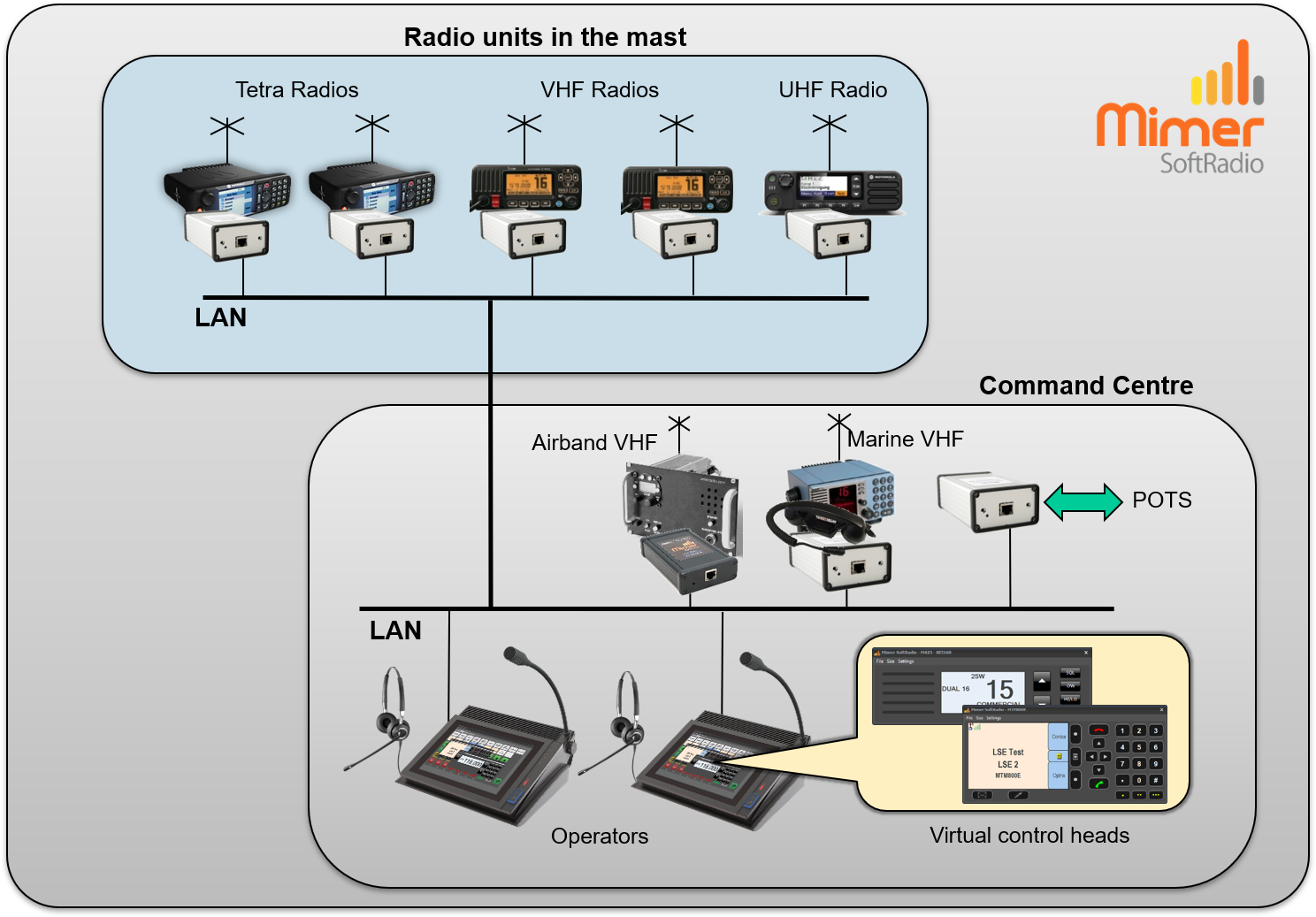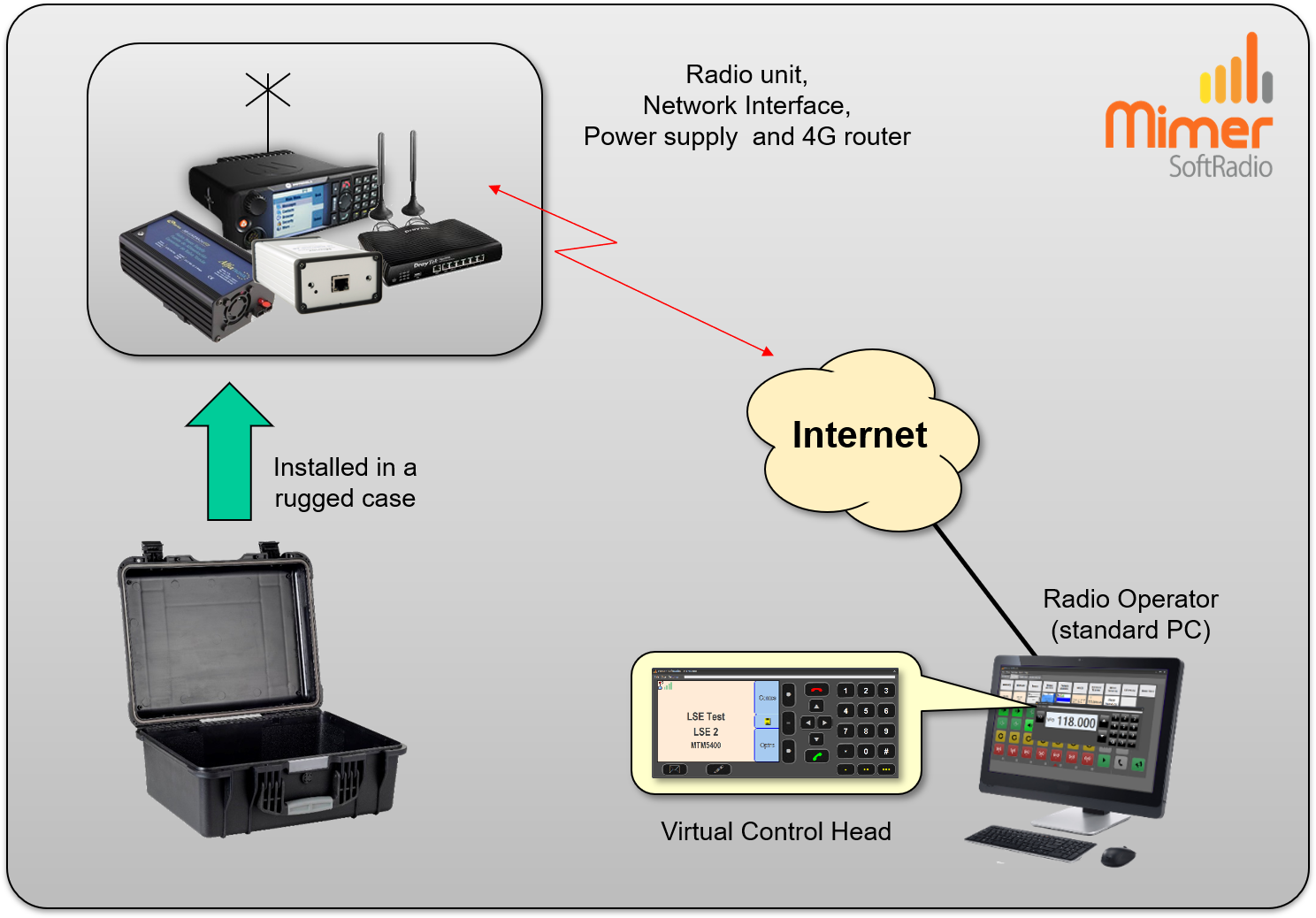Mimer SoftRadio - Large Systems
A SoftRadio system can be built in many sizes. Please also see the other pages with examples.
Operators can be local or remote, and also the radios can be local or remote, all in a mix. The radios does not need to be of the same brand or work in the same type of system, you can mix and match as you like. You can even mix with phones, intercoms and PA-systems into the system.
Below are some examples of systems in the larger scale.
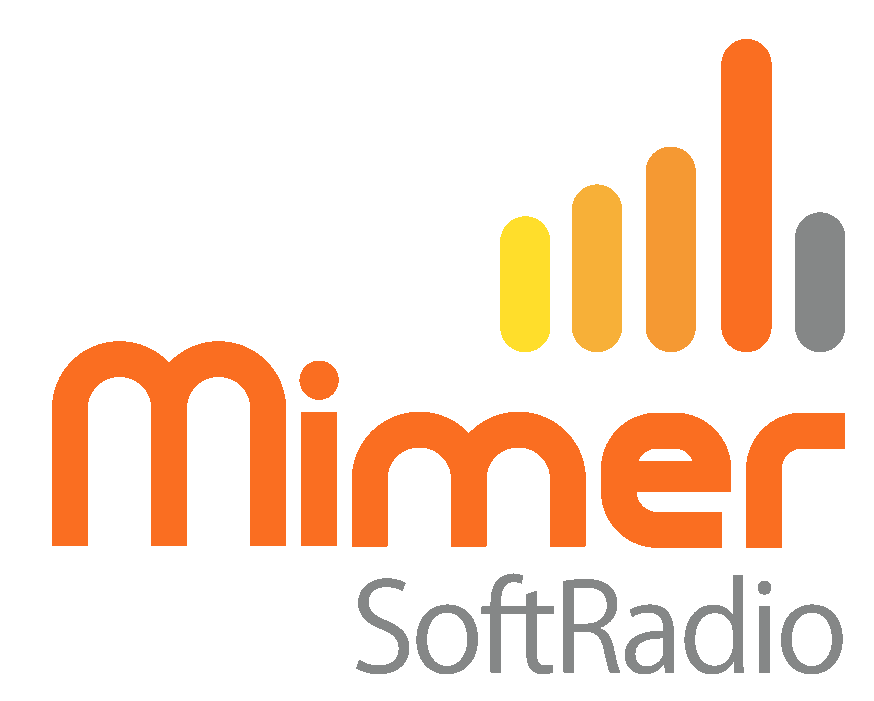
Systems with different types of radios connected.
Bus companies as well as taxi companies often have local dispatch centrals for a geographical area. In the night time when traffic is low they often collect their personnel to one central. With SoftRadio it is easy to connect all radio systems into one place. The radio systems can be of different kinds, like in the example below.
The radios can be connected over a WAN, like below, or via the Internet.
Oil rigs have large needs for radio communication. They use a number of different systems. For the onboard communication it can be analogue, DMR or Tetra. On top of that are Airband radio and Marine radio.
Connecting all systems into SoftRadio makes it possible to communicate with all users from each dispatcher. It also makes it possible to do the same from remote users, for example at a second dispatch central on shore.
Typicaly the onboard communication portables are ATEX radios since the environment is an explosive hazardous area. But there are no Airband radios with ATEX approval. So when personel on deck needs to talk to an inbound helicopter they can ask a dispatcher to make a cross patch in the SoftRadio system between the onboard radio and the Airband radio, and then use the ATEX approved onboard radio and still be able to talk to the helicopter.
Also PA-systems can be connected to SoftRadio so that dispatchers can both make PA announcements and also listen to to the PA calls. A dispatcher that is on shore might have good use to hear what is said on the PA system on the platform. This can also be combined with cross patch so that personel using hearing protection will hear the PA calls through the radio system instead of the speakers.
Radio systems on several platforms can also be combined so that they can communicate together.
Same type of thinking works for offshore wind farms were many radios are used both during the building period and during the many years of producing electricity.
A system consists of many radio sites, each holding both Marine VHF, Airband VHF and Tetra or DMR radios. All of the sites needs to be remote controlled from centres onshore.
IP-connection to the offshore sites can be a mix of satellite, fibre or micro wave links.
Read more on the Offshore page.
Systems that are spread out geographically.
An example from the Swedish state owned casinos, Casino Cosmopol. There are four casinos and they are all connected to an operations center just outside Stockholm. From there operators can monitor everything in the casinos through hundreds of cameras.
For the operators to be able to talk to the guards and other personel at the casinos there are remote radios at each casino connected through their own WAN to the operations center.
Many radio systems needs to cover large geographical areas. This can be done by connecting several spread out radios into the dispatch central.
If more than one dispatcher needs access to each base station over the Internet. It can be achieved with the help of a Mimer NetworkRepeater.
The base stations can be connected together through the use of Mimer CrossPatch making part of the system, or all of the system, into one large radio coverage area.
Security Dispatch
Typical setup for a security dispatch centre. Instead of each operator having one radio in front of him. Everyone can use all radios. The radios them selves are placed in a data rack instead of taking up desk space.
There is also an extra radio connected to a Mimer StatusLog that collects all status calls, alarm calls and voice call requests. Helping the operators to answer calls and alarms in the right order.
A Mimer VoiceLog records all audio in the system.
Mixed types of Base stations / Connections
- One local base station working via a repeater.
- One remote base station connected with IP over the Internet.
- One base station connected through a leased two wire line.
- Two remote radios connected via a 4G modem.
This might be the set up for a taxi company in a small town, that also dispatches some other towns nearby. Different old type of radio systems that need to work together. To one base station ADSL can be delivered, to an other its not possible and the old leased line needs to be used.
In the second example a temporary setup is made to expand communications at a remote site where the public safety network has low capacity. For example used at a forrest fire.
Also see the offshore examples above with communication through satellite and micro wave links.
Mimer SoftRadio can handle the mix of systems needed to fulfil customer needs.
Command and Control Vehicles & Rapid Deployment
The vehicle can be both on land and on water. Read more on the Command and Control Page.
Above is an example of a rapid deployment case with a radio and a 4G modem. The system can be set up very quickly.
A remote user can connect through the Internet from “anywhere”.
Temporary systems
Please see the separate page with examples of systems built for temporary use.

